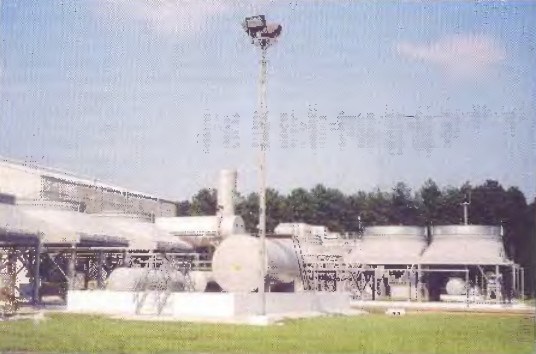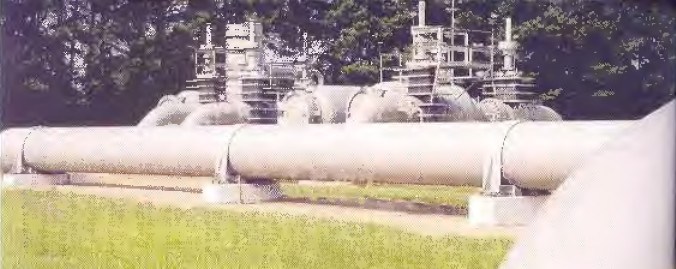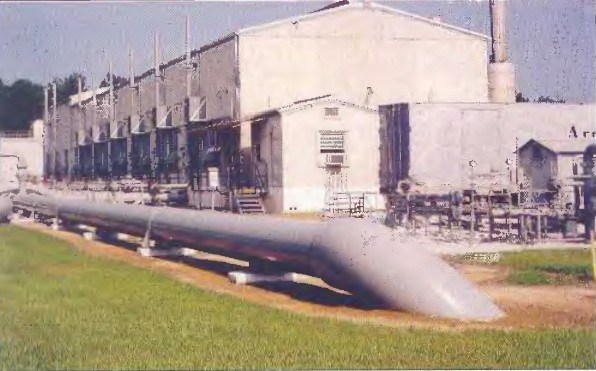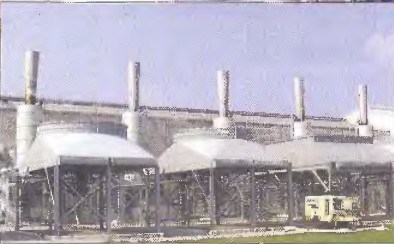ByBruce A. Kaiser, President, Lightning Master Corp., Clearwater, Florida

In the old days, monitoring and control systems were rather rudimentary and not subject to atmospheric transients’. However, the advent of microprocessor-based monitoring and control systems has changed the ground rules. Various types of sensors monitor conditions on pipelines and other structures and convey their information to a central computer system. Information is collected at low voltages and controls are relayed at only marginally higher voltages. “The computer, of course, operates and very low voltages.
The lower the operating voltage, the more susceptible a device is to transient voltage surges. A 200-volt transient is not a big deal to a 480-volt system. However, the same 200 volt transient is a big deal to 24-volt system.
Also the faster the operating speed of a system the more susceptible it is to transients. You may want to make a system operate faster but you cannot make electricity go faster. Therefore, you have to shorten the distances the electricity must travel. With shorter distances, the arc-over voltage becomes lower. The faster the system, the more susceptible it is to transients.
The Lightning Discharge
A lightning strike is a potential equalizing are between areas of different potential (voltage). This arc most often occurs between different areas of charge within or between clouds, but sometimes occurs between areas of different potential in the cloud and on the surface of the earth.
Lightning Damage
There are four basic types of lightning damage: physical, secondary effect, electromagnetic effect, and that caused by changes in ground reference potential.
Physical damage is caused by current flow and heat.
Secondary effect damage is caused by the motion of ground charge toward the point of the strike. When lightning strikes a point on the surface of the earth, it relatively vacates the ground charge at the point. The surrounding area remains charged as before the strike. That charge rushes toward the point of the strike. If that inrush of charge crosses a gap, it can arc.
Electromagnetic effect damage is caused by currents induced by the electromagnetic pulse emanating from the lightning channel or from the object which is struck. This pulse can induce current in nearby wires, damaging connected equipment. This explains why equipment can be damaged by a nearby strike.
The fourth type of damage is caused by changes in ground reference potential.
Solving The Problem
Since lightning has so many different ways to cause problems, you cannot buy one big black box to stop all lightning damage. You have to follow several steps.
The first step is grounding. There are two types of grounding; structure and services.
Most pipeline facilities are built with a ground grid system beneath the plant. If it has been properly designed, installed, and maintained, this system is adequate for lightning grounding purposes. In most cases all you need to do is provide straight connections between the various structures and the grounding system.
The grounding purpose, in most cases, all you need to do is provide straight connections between the various structures and the grounding system.

What about conductors entering from another structure which is at a different ambient ground potential? What about surges from outside sources? This leads to the second step in effective lightning protection: transient voltage surge suppression, or TVSS.
Any conductor entering your facility is capable of delivering all types of mischief. Therefore, we install a device called a surge suppressor on each conductor. The surge suppressor is merely a device which limits voltage between conductors and between conductors and neutral or ground by becoming at some voltage slightly above the operating voltage of your system. On a 24-volt system the surge suppressor may be designed to become conductive at perhaps 30 volts. At that point, any over voltage is shunted to ground, so it does not appear at your equipment.
It is important to note that surge suppressors must be installed at both ends of each conductor to protect the computer and sensor or relay.
At a typical plant such as a compressor station a primary surge suppressor should be installed on the AC power main disconnect. Secondary-surge suppressors should be installed on each sub-panel, particularly those feeding microprocessor- based equipment. This scheme will suppress transients from all sources.
Your process control computer collects information from the field, usually no supper pairs at 24 volts. For installation and maintenance convenience, conductors from the field are terminated on a terminal block, with jumpers run from the terminal block to the computer.
This terminal block can easily be replaced with a terminal block surge suppressor. This is obviously done most easily during initial construction but may also be retrofitted. The field end of these conductors run to the various levels, temperature, pressure, load, and other sensors. A surge suppressor should also be installed on the field end of the wires as close to the sensors as possible to protect the sensors. There are in-conduit units available for this application.
The same principle applies to the control conductors, which usually run 110 volts. Replace the computer and terminal strip with a terminal strip surge suppressor and install in-conduit surge suppressors at the relay in the field. This approach will stop transients induced onto the length of the wire from damaging equipment at either end.
The telephone service into the plant often serves as a path for transients to enter equipment and also may present a danger to computers and personnel talking on phones, particularly while touching other grounded equipment. Therefore, surge suppressors should be installed on the main service into the plant and on both ends of conductors between handsets in out buildings.
If you use radios for voice or data transmission each antenna and coaxial cable should be properly grounded and surge suppressed at the base of the tower or other antenna support and before it reaches the radio.
It should be obvious that surge suppression must be installed on each service, preferably as close as possible to where it enters each structure. Care must also be taken to route unprotected and ground conductors away from protected conductors. Often, we see an installer bundle all conductors, including, grounds, together for neatness. However, a transient going to ground on a ground conductor may be inductively coupled onto protected conductors downstream of the surge suppressor, compromising the benefit of the surge suppressor.
That’s fine, but what about a direct lightning strike to my facility? That brings up the third step in effective security structural lightning protection.
In the world of lightning rods, there is an entire spectrum of designs ranging from lightning rods designed to attract lightning, through conventional lightning rods, to lightning rods designed to discourage direct lightning attachment. These functions are achieved primarily though point shape.
In the instant before the lightning strike stepped leaders begin working their way downward from the cloud charge in 150-foot jumps. When they reach to within about 500 feet of the surface of the earth they begin to pull streamers from objects on the surface. Whichever object throws off the best streamer is the object which is struck.
If you want to mount a sharp terminal and a blunt air terminal side -by -side, facing an oncoming thunderstorm as the ground potential (ground charge) rises, the sharp point breaks down into corona under a relatively low voltage(it leaks ground charge ions off into the air from its sharp point. The blunt rod cannot break down and accumulates charge. As the potential rises, the antennas build off the sharp point, while the blunt rod further accumulates charge.
When the potential becomes extremely high, such as in the split second before the strike, the corona further builds over the sharp terminal, but, when the blunt rod finally breaks down it does so catastrophically, with the accumulated ground charge jumping of the blunt rod in the form of a streamer. Because whatever object on the surface emitting the “best” streamer wins the competition, the blunt rod will obviously prevail, and, throwing off the best streamer, is struck in preference to the sharp terminal.
In many cases, a hybrid system may be installed, attracting lightning to preferred locations and discouraging it from striking critical or sensitive structures.
Inspection and maintenance is another important consideration. During expansion, plant upgrades and routine maintenance, ground conductors get broke. surge suppressors wear out, and air terminals get blown or knocked off. Therefore, the entire system should be inspected periodically and certainly after, maintenance which may affect it.
If you have transitioned to microprocessor-based control systems, are in the process or are contemplating doing so, a properly designed, installed and maintained lightning protection system may be the ticket to long-term reliability.
Author: Bruce A. Kaiser is an expert on lightning protection, having written articles on lightning protection that have appeared on regional and national professional organization programs and seminars. He serves as a member of API 545. Lightning Protection for Hydrocarbon Storage Tanks Committee.





